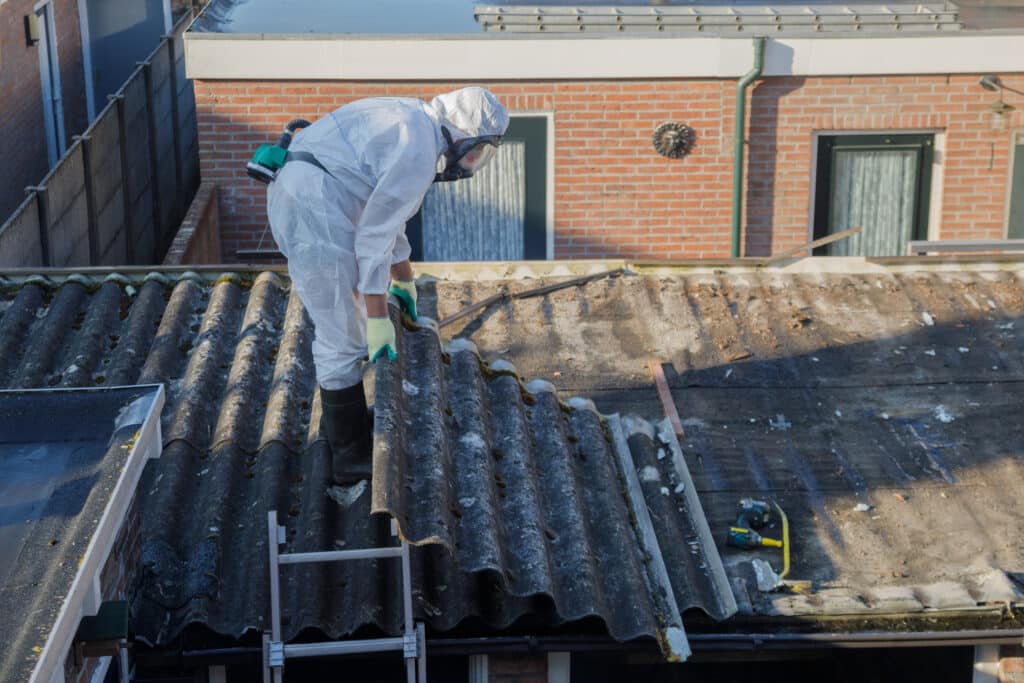
Asbestos was once hailed as an incredibly versatile and valuable material. However, it is now most well-known for its detrimental effects on your health. Despite being banned in many countries due to its harmful properties, you may still find asbestos in numerous buildings constructed before these regulations came into effect.
At Liberty Restoration, our team understands the significant risk asbestos can have to your health, especially if you don’t know you’re being exposed. If you have recently bought a new home or are considering renovating it and want to see where you might find asbestos, keep reading to learn about the five most common places it may be hiding.
What is Asbestos?
Asbestos is a naturally occurring mineral composed of thin, microscopic fibers. Due to its ability to resist heat, its durability, and its insulating properties, asbestos began being used in various industries, including construction, shipbuilding, and automotive manufacturing. This use of asbestos began in the late 19th century and lasted until the late 20th century.
Restrictions surrounding the use of asbestos began to emerge in the United States in the 1970s. In 1989, the EPA banned new asbestos products from entering the marketplace. This ban came after knowledge of the detrimental health effects surrounding asbestos. While the EPA banned the material from being used in future projects, it is still possible that you may find asbestos in structures standing today.

Signs of Asbestos Exposure
The ban on asbestos materials came following the discovery that exposure to it caused severe health problems. The most common disease that develops due to asbestos exposure is Asbestosis. This chronic lung disease causes your lung tissue to scar, leading to shortness of breath. Asbestosis symptoms may start mild but may become much more severe over time.
It is important to note that while you may be exposed to asbestos in your home, the long-term effects of exposure don’t typically appear until at least ten years later, with some symptoms not appearing for up to 40 years. The most common symptoms of Absbestosis include:
- Shortness of breath or difficulty breathing, especially during physical activity
- A persistent dry cough that doesn’t go away, accompanied by chest pains or tightness
- Sharp chest pain or tightness and discomfort
- Widening and rounding of the tips of your fingers and toes, also referred to as clubbing
- Unexplained, unexpected fatigue and weakness that interferes with everyday activities
- Significant loss of appetite, accompanied by weight loss
- A dry, crackling sound that comes from your lungs when breathing in
Where Can You Find Asbestos?
One of the easiest ways to avoid exposure is to know where you may find asbestos in your home. There are many places that you may want to check when trying to find asbestos, including the following:
1. Popcorn Ceilings
Popcorn ceilings, also known as acoustic ceilings, were increasingly popular among homeowners in the mid-20th century. While they were popular, they are an incredibly common place to find asbestos.

2. Vinyl Flooring
If your home has old vinyl flooring, the adhesive used to adhere these floors to your floor may be home to asbestos.
3. Roofing Materials
Due to its fire resistance, asbestos was frequently used in roofing materials, including shingles and siding. While this is a great way to protect your home from fire damage, it also makes it a common place to find asbestos.
4. Pipes or Ducts
Many asbestos-containing materials were commonly used to insulate pipes, ducts, and boilers in older homes. If your home is full of old pipes or ductwork, you may find asbestos around them.
5. Insulation
Because of its insulating properties, asbestos materials were used in many loose-fill, spray-applied, or blanket insulation. You may find asbestos in your attic or walls when replacing old insulation.
What Should You Do If You Find Asbestos In Your Home?
If your home was built before the 1980s, there is a good chance that you may find asbestos in one or more of the materials above. But what should you do if you find asbestos in your home? While you might believe that taking immediate action is in your best interest, this might not be the case. In fact, it might be safest for everyone if you reach out to a restoration professional for asbestos abatement services.
Attempting to remove asbestos materials on your own may lead to asbestos filament getting into the air ducts and airways of your home. This may lead to continued asbestos exposure, even after removing the materials. By relying on professionals, you can trust that these materials will be adequately removed and your home will be cleaned of any potential residual asbestos filaments.
While performing these services on your own may save you money in the short term, it is always best to err on the side of caution. Turn to a trustworthy asbestos abatement team, who will have the appropriate tools and personal protective equipment to keep themselves and your loved ones safe from the long-term effects of asbestos exposure.

Trustworthy Asbestos Abatement from Liberty Restoration
Although asbestos was once regarded as a miracle material, it is now well-known that it poses a significant health risk to anyone exposed to its fibers. Identifying and properly managing asbestos materials in your home is crucial, which is why you should work with a trustworthy abatement team, like our team at Liberty Restoration.
With years of experience helping homeowners remove asbestos-containing materials from their homes, we’re confident that we can do the same for you. Don’t attempt this project on your own, and risk the life and health of your loved ones. Contact our team at Liberty Restoration today and trust that we’ll get the job done safely.



